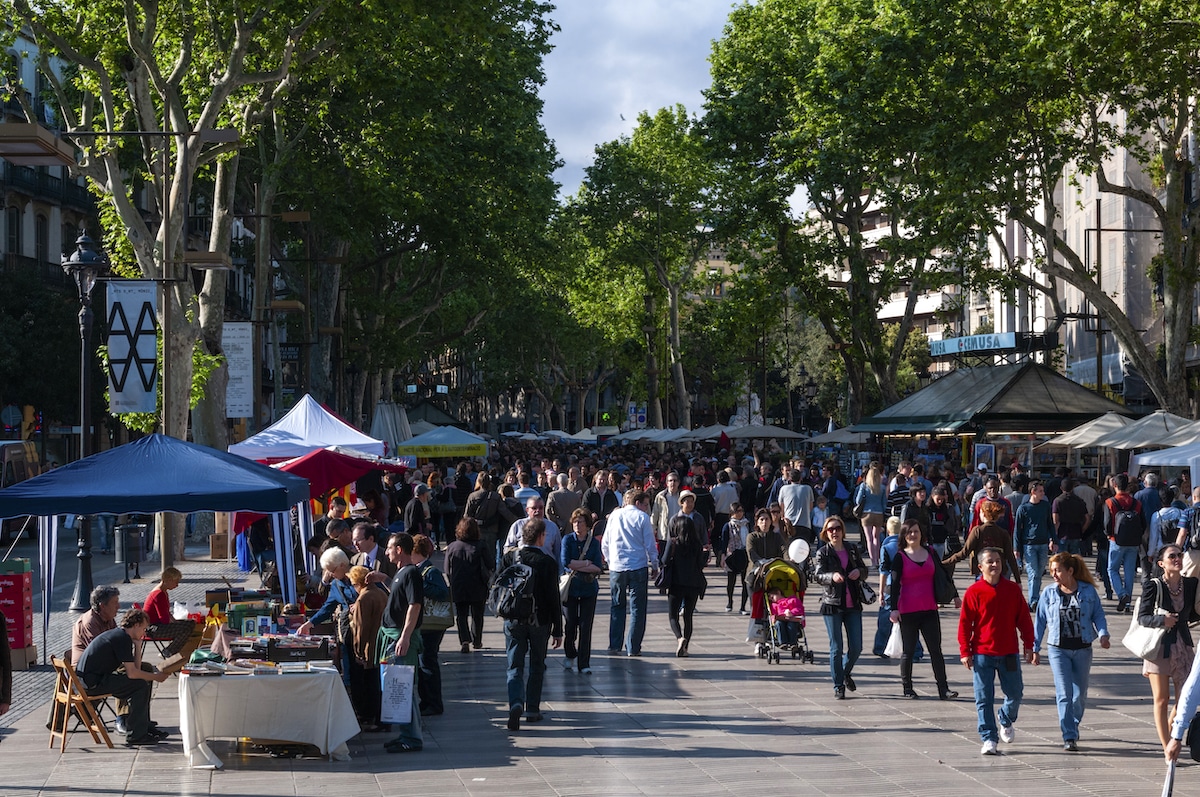Products You May Like
Tourists walking along La Rambla in Barcelona, which has a goal of 30 percent tree cover by 2037. Sergio Pitamitz / VWPics / Universal Images Group via Getty Images
 Why you can trust us
Why you can trust us
Founded in 2005 as an Ohio-based environmental newspaper, EcoWatch is a digital platform dedicated to publishing quality, science-based content on environmental issues, causes, and solutions.
Urban planners could save lives by planting more trees.
A new study published in The Lancet Tuesday found that increasing the tree cover to 30 percent in 93 European cities could have prevented 2,644 heat-related deaths over a summer period.
“We already know that high temperatures in urban environments are associated with negative health outcomes, such as cardiorespiratory failure, hospital admission, and premature death,” study lead author Tamar Iungman of the Barcelona Institute for Global Health said in a press release. “This study is the largest of its kind, and the first to specifically look at premature mortality caused by higher temperatures in cities and the number of deaths that could be prevented by increasing tree cover.”
More From EcoWatch
A combination of reduced vegetation and heat-absorbing building materials like asphalt, steel and concrete can turn cities into “urban heat islands.” This is a well-documented phenomenon, but the study authors set out to understand how it plays out in European cities specifically under current climate conditions.
They therefore examined mortality and temperature data for 93 European cities between June and August of 2015, looking at a total population of 57 million all older than 20. They chose that summer because it was the most recent for which they had access to the necessary data, and its temperatures matched the contemporary European norm, New Scientist explained.
First, the researchers modeled temperature with and without the urban heat island effect, according to the press release. They found that, with the effect in place, temperatures in the cities were 1.5 degrees Celsius on average hotter than the countryside, with the city of Cluj-Napoca, Romania, reaching 4.1 degrees hotter. Furthermore, a total of 6,700 early deaths could be blamed on higher temperatures.
They then considered what would happen if the cities were greener. Currently, the average European city has a tree cover of 14.9 percent. The study authors doubled this to 30 percent because it is the stated goal of several European cities, The Guardian explained. London, for example, has a 30 percent tree cover target for 2030 and Barcelona has a similar goal for 2037, according to New Scientist. The researchers found that meeting that goal and doubling current tree cover could lower the average urban temperature by 0.4 degrees Celsius and prevent a third of the excess deaths — or 2,644 of them, according to the press release.
While 30 percent tree cover is a common target, cities could only help themselves by going further, according to Bloomberg. The study authors further found that increasing tree cover to 40 percent would cool cities by a half of a degree Celsius and prevent 3,727 deaths.
The findings are especially important in the context of the climate crisis, and the study authors hope that policy makers will pay attention to their findings.
“Our city centres are too hot,” study co-author and Director of Urban Planning, Environment and Health at the Barcelona Institute for Global Health Mark Nieuwenhuijsen told New Scientist. “We can use nature-based solutions like tree planting to reduce the effect of the heat island and related mortality.”
The European cities that most stand to benefit from new tree cover are those in Southern and Eastern Europe, which saw the highest temperatures and the highest heat-related mortality rates, according to the press release.
Planting trees has additional benefits for communities beyond keeping cities cool, such as reducing air pollution and boosting mental health. Access to urban greenery is also a major environmental justice issue.
“Urban trees bring many co-benefits beyond climate change adaptation: many studies show just seeing and smelling trees benefit health and wellbeing, as well as enhancing urban biodiversity,” University of Oxford Professor of ecosystem science Yadvinder Malhi told The Guardian. “But most tree cover is found in wealthy towns and neighbourhoods, so enhancing urban tree cover can reduce this inequity and particularly reduce the high vulnerability of poorer neighbourhoods to climate change.”
Tree planting isn’t the only thing that needs to be done in the face of rising urban temperatures, however.
“Essentially all heatwave-related deaths are preventable; no one needs to die from the heat,” Kristie Ebi of the University of Washington, who was not involved with the study, said in a comment. “With climate change projected to increase the frequency, intensity, and duration of extreme heat events, communities need to understand the most effective interventions, particularly developing and deploying heatwave early warning and response systems.”
Subscribe to get exclusive updates in our daily newsletter!
By signing up, you agree to the Terms of Use and Privacy Policy & to receive electronic communications from EcoWatch Media Group, which may include marketing promotions, advertisements and sponsored content.
